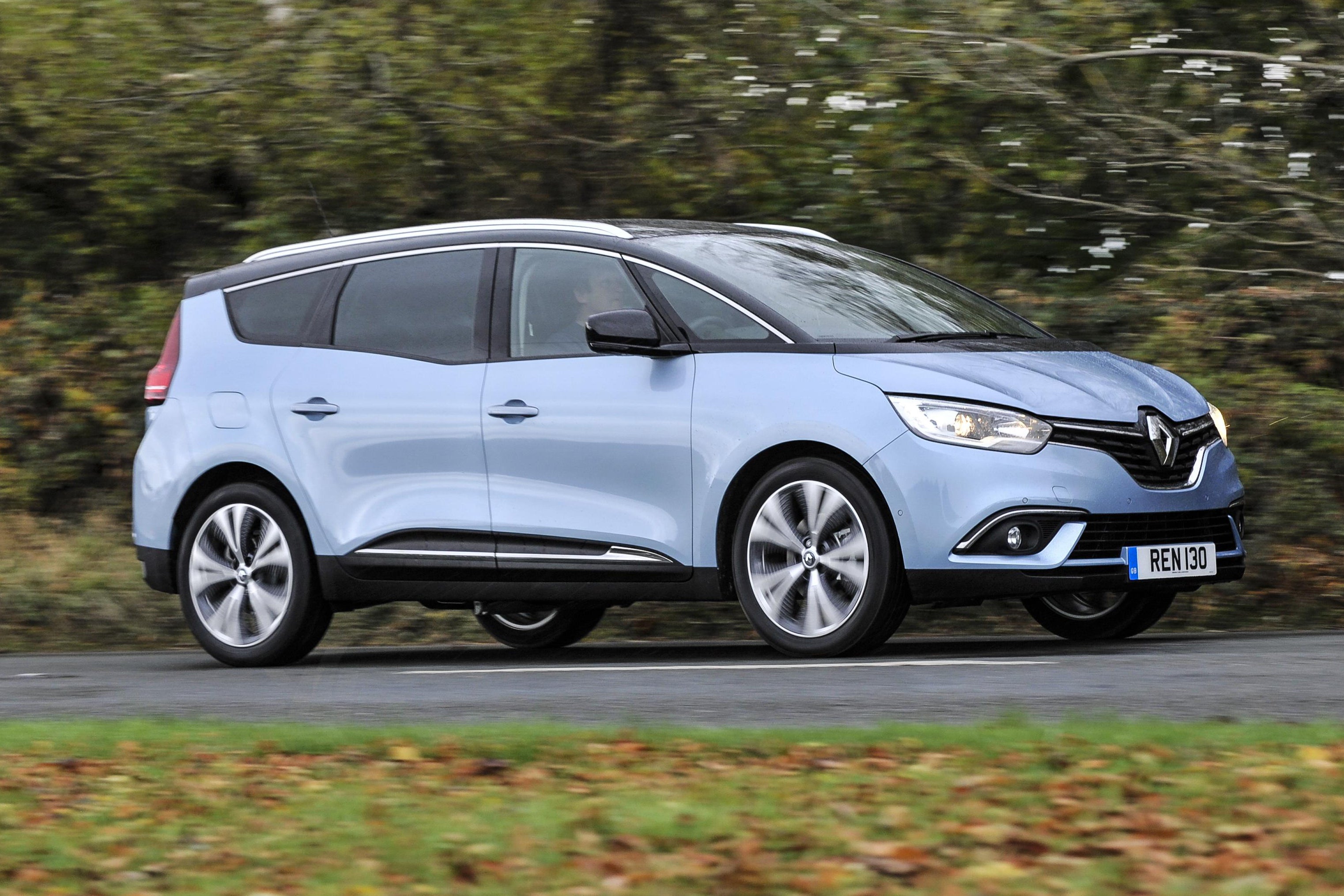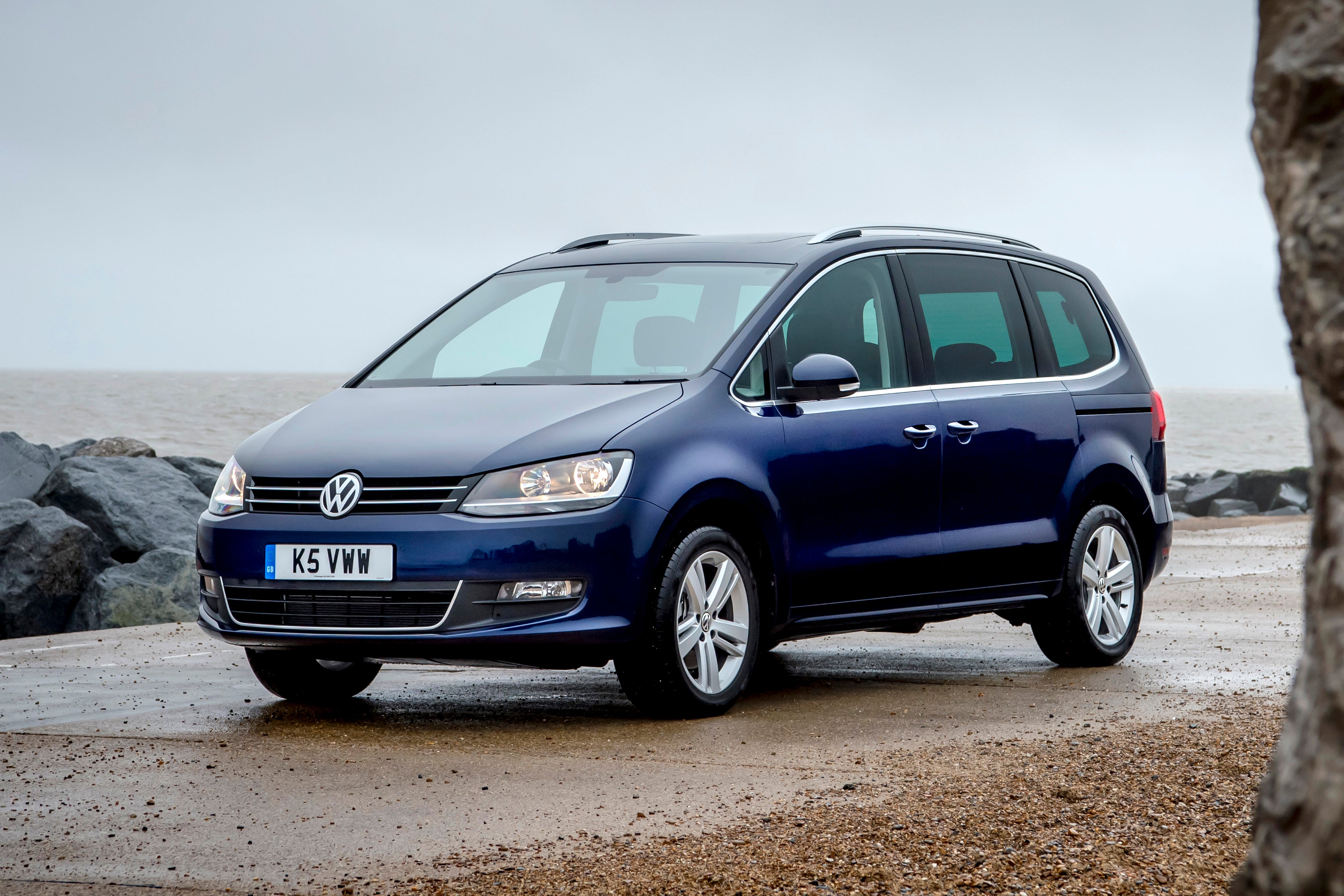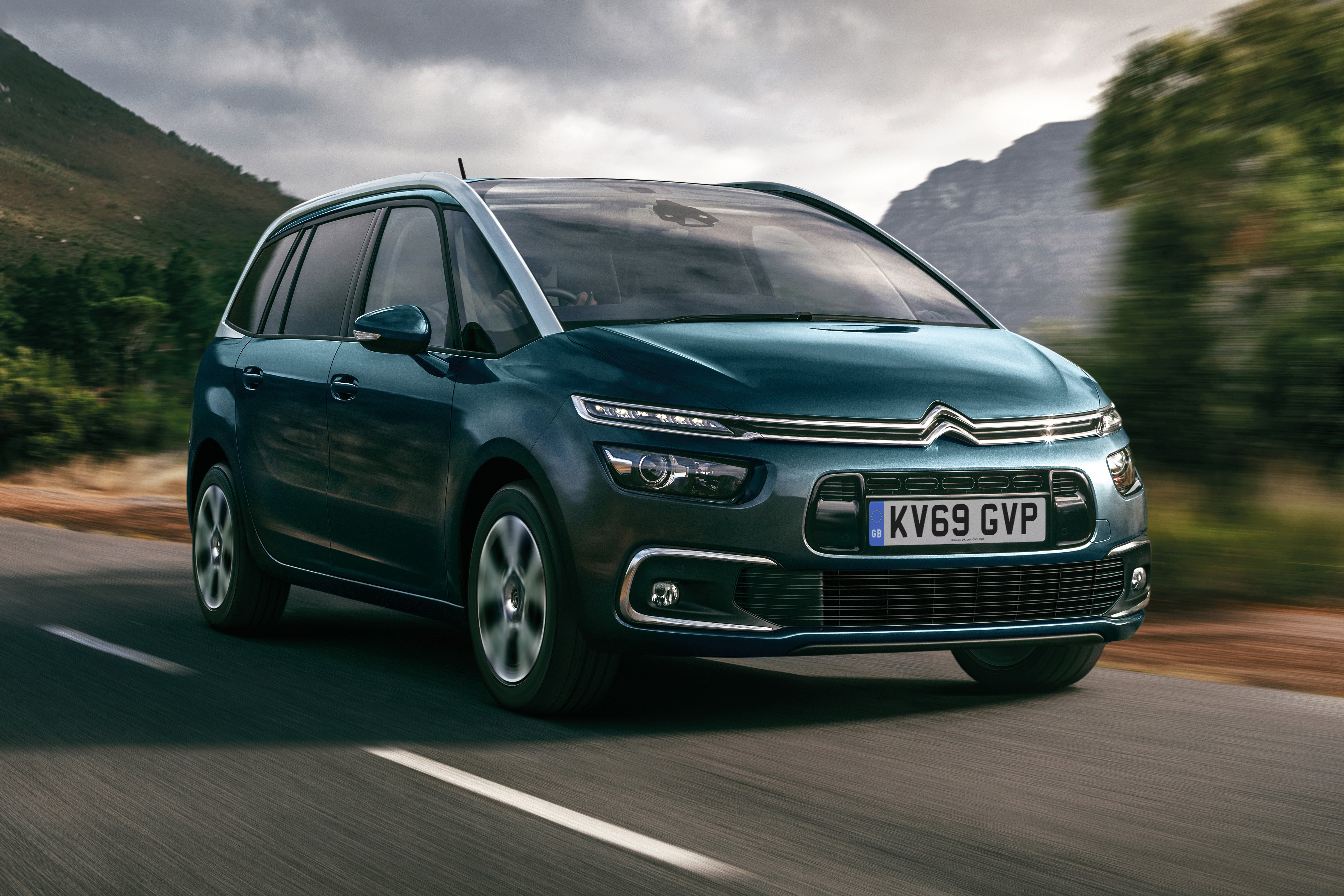Ford Galaxy Review 2023
Written by Andrew Brady
Quick overview
Pros
- Flexible seating for seven adults
- Spacious interior, especially with the rear seats folded down
- Good level of standard equipment across the range
Cons
- Not exciting to look at or live with
- Some rivals offer the convenience of sliding rear doors
- People will think you’ve become a taxi operator
Overall verdict on the Ford Galaxy
"Judged on being a seven-seater, the Ford Galaxy would get close to top marks. The flexible seating arrangement is superb, while there’s enough space for seven adults to sit in comfort. It’s also reasonably good to drive, with enough toys to make life as a ‘mum or dad taxi driver’ a more pleasurable experience."
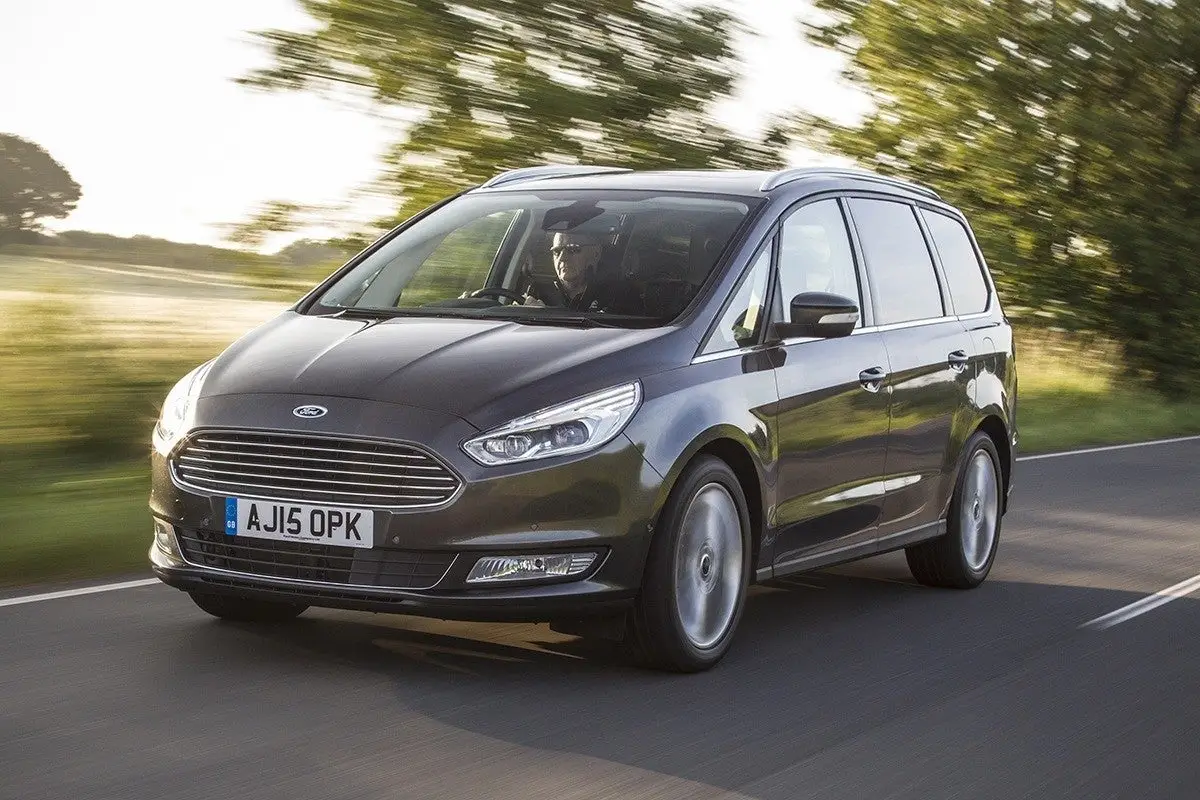
Ford has honed the Galaxy to within an inch of perfection during its three decades of existence. The latest version of the seven-seat MPV in this review might not be the most fashionable or desirable vehicle on the planet, but if you need a car like this, the Galaxy is arguably the best of the breed.
Launched in 2015, and given a minor facelift in 2019, the Ford Galaxy majors on space, practicality and flexibility, with seating for seven adults. This gives it the edge over the raft of ‘5+2’ MPVs and SUVs on sale these days, while many MPVs that do offer this amount of space are based on vans (the Galaxy is based on the Ford Mondeo underneath).
Main rivals for the Ford Galaxy that aren't based on vans include the Seat Alhambra, Volkswagen Sharan and Citroen Grand C4 Spacetourer. Van-based alternatives include the Volkswagen Caravelle, Vauxhall Vivaro Life and Mercedes V-Class.
Key to the Galaxy's appeal is a flexible seating arrangement, which provides up to 2339 litres of space if you don’t require the five rear seats. Even in seven-seat mode, there’s a generous 300 litres of luggage room available, with 1301 litres on offer in five-seat mode. Throw into the mix a plethora of storage bins, pockets and cubbies, and you’ve got the makings of one of the most practical cars you can buy.
It’s also well-equipped, with the entry-level Zetec trim packed with lots of standard equipment. Titanium trim (the only trim available to order new in 2022) adds a few more luxuries, albeit for a higher price. The Galaxy might look expensive on paper, but when you consider the standard kit and practicality on offer, it begins to make more sense.
Because it’s based on the Ford Mondeo, the Galaxy is actually pretty good to drive. The smaller S-Max MPV remains the dynamic hero, but the Galaxy offers a comfortable ride, sharp steering and a surprising lack of body roll when cornering. The S-Max is more fun to drive, but the gap isn’t as wide as the brochures might lead you to believe.
It’s also remarkably refined, with very little wind and road noise, even on the motorway. Cover the badge on the steering wheel and you’d be forgiven for thinking you were driving something built by a premium manufacturer. It really is that good.
What’s the catch? Well, the styling is bordering on frumpy, although the facelift of 2019 has given the Galaxy a slightly sharper look. It also has a questionable image – your friends and family will think you’ve started an airport taxi business.
Beyond that, we’re starting to struggle. The cabin space is excellent, it’s quiet and comfortable on the move, and it comes loaded with a long list of standard kit. It’s almost completely devoid of flair and excitement, but the Galaxy is a car you buy with your head and not your heart.
Early examples of the Galaxy are cheap, but we’d recommend buying a more recent model. An update in 2018 ushered in an improved range of engines and transmissions, while the 2019 facelift improved the overall package.
If you’re after a proper seven-seater, the Ford Galaxy remains one of the most convincing cars you can buy. Taxi!
Looking for a used car for sale? We've got 100s of Ford Approved Used Cars for Sale for you to choose from, including a wide range of Ford Galaxy cars for sale.
Is the Ford Galaxy right for you?
Ford didn’t invent the MPV, but the Galaxy has become a bit of a household name when it comes to people carriers. Unlike some rival models, the Galaxy offers seating for seven full-sized adults, which makes it a firm favourite in the private hire and taxi sectors.
Put simply, it offers the kind of space, practicality and flexibility you won’t find in a seven-seat SUV, so it’s the MPV to choose if your family is growing up fast. You won’t win any style points on the school run, but that’s hardly the point of the Galaxy.
It’s actually pretty good to drive and is packed with plenty of kit as standard, so you won’t feel like you’re ‘slumming it’ in a rental hack.
What other cars are similar to the Ford Galaxy?
In a previous life, the Ford Galaxy shared much in common with the near-identical Volkswagen Sharan and SEAT Alhambra. Although the current version is a standalone model, the Sharan and Alhambra remain the Ford’s chief rivals.
The only other offerings that offer comparable levels of passenger and luggage space are van-based MPVs. There's quite a few of these around, including the near-identical Stellantis group models; the Vauxhall Vivaro Life, Citroen Spacetourer, Peugeot Traveller and Toyota Proace Verso. There's also the Mercedes V-Class if you're after a more upmarket van-based model, plus the ever-popular VW Caravelle and Ford's own Tourneo Custom.
If you only need access to a third row of seats on an infrequent basis, the smaller Ford S-Max and Volkswagen Touran are worth a look, while the Citroen Grand C4 SpaceTourer and Renault Grand Scenic provide a little more flair.
You should also consider the increasing range of 5+2 SUVs, including the Skoda Kodiaq, SEAT Tarraco, Peugeot 5008 and Volkswagen Tiguan Allspace.
Comfort and design: Ford Galaxy interior
"You sit high in the Ford Galaxy, which provides a commanding view of the road ahead, along with the opportunity to rub shoulders with the countless SUVs on the road. The interior isn't an exciting place to sit, but quality is decent and there's loads of standard equipment."
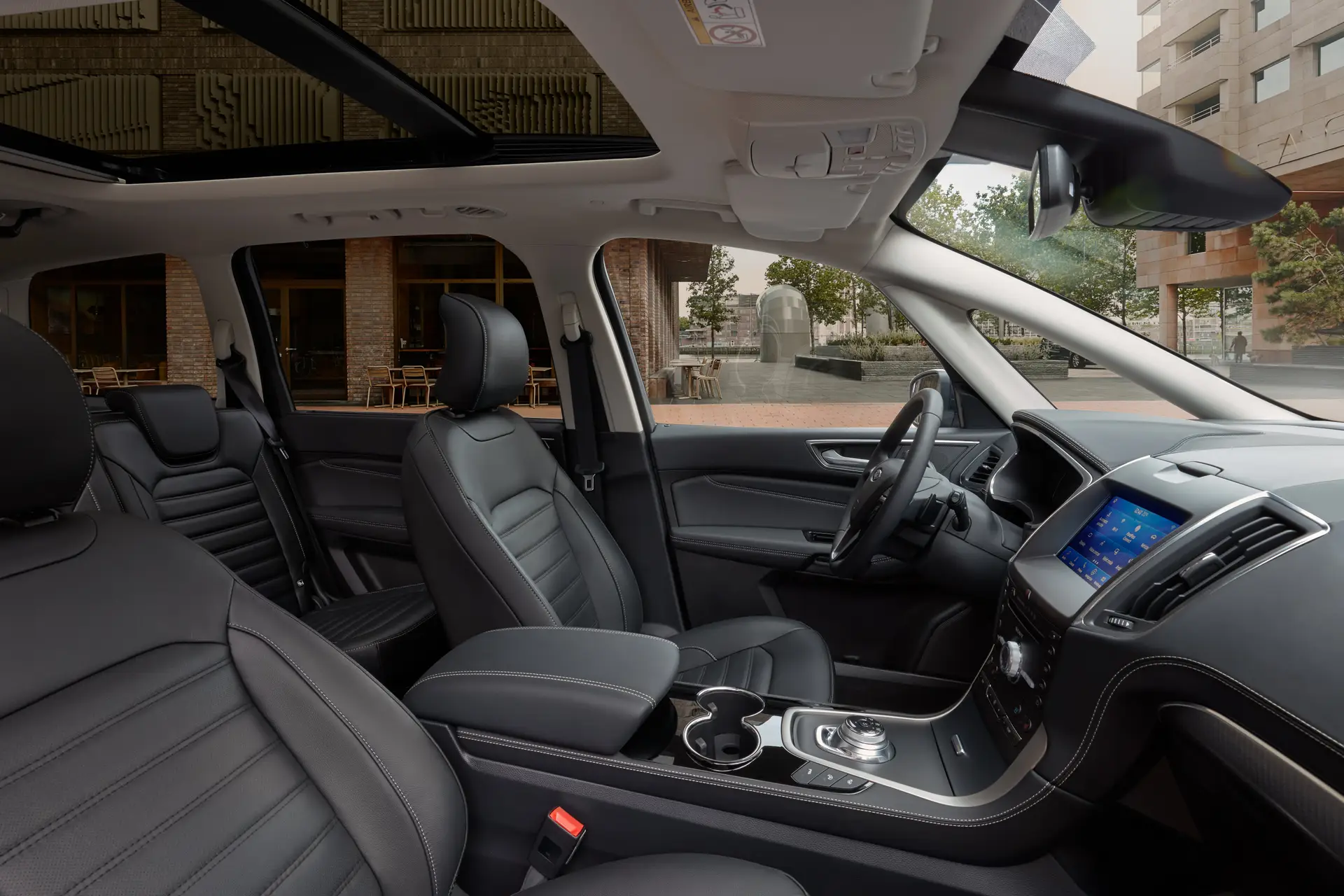
The Ford Galaxy is a traditional MPV, but it does have something in common with today's crop of SUVs - a high driving position and commanding view of the road ahead.
In fact, all-round visibility is excellent, with a large glass area contributing to a light and airy cabin. A three-piece windscreen is great for manoeuvring through tight and congested streets, although the (sometimes optional) rear-view camera might come in handy when a full quota of passengers is restricting the view out of the back window.
The driving position is excellent, aided by a steering wheel that’s adjustable for height and reach, plus a driver’s seat with lumbar support adjustment. If you intend to spend many hours behind the wheel, we’d recommend the optional 18-way electric seat adjustment, which allows you to set the position to ‘just so’.
The design of the dashboard is utterly conventional, with the Zetec version boasting a pair of traditional dials flanking a 4.2-inch colour TFT display. The Titanium model features a 10.1-inch display, which adds some interest to an otherwise dull and uninspiring cabin.
A large central armrest provides a comfortable place for your elbow while the standard-fit cruise control takes the strain on a long motorway journey. A leather-trimmed steering wheel and gear knob deliver a feeling of luxury, but leather seats are an option even on Titanium models.
Overall, the Galaxy is a comfortable and easy car to live with. You’ll be sitting in comfort as you listen to endless cries of “Are we nearly there yet?” from the children in the back.
Quality and design
You wouldn’t call the Ford Galaxy ‘premium’, but its cabin feels reassuringly solid and upmarket. Unlike the smaller S-Max, there isn’t a Vignale trim available on the Galaxy, so it misses out on the full-fat luxury treatment.
No matter, because the interior is well screwed together, with the buttons and switches offering the reassuring qualities you’d associate with a so-called premium car. Little touches like the chrome surround on the air vents, centre console and inner door handles provide a touch of class, although the actual plastic used on the centre console itself is hard and cheap-feeling.
The Titanium model doesn’t raise the perceived quality, but interior ambient lighting, keyless start and go, and the 10.1-inch digital instruments do enhance the ownership experience. The Titanium Lux pack adds adaptive LED headlights, heated leather seats with eight-way electric adjustment, plus an electric tailgate. The pack isn’t available with Zetec trim, so it’s one reason you might want to upgrade to Titanium. It's worth noting, though, that new buyers can now only choose Titanium trim.
Another reason is the third-row rear seats with an electric fold-flat, side and recline function. This also provides easy access to the third row. If you intend to use all seven seats on a regular basis, this is a must-have upgrade. If not, stick with Zetec, or consider the cheaper and more lavishly appointed S-Max.
Infotainment: Touchscreen, USB, nav and stereo in the Ford Galaxy
All versions of the Ford Galaxy come with an eight-inch colour touchscreen infotainment system as standard. Since the 2019 facelift, the Galaxy has benefited from Ford’s Sync 3 software, which is superior to the Sync 2 system fitted to earlier models.
It’s not perfect. The display looks dated, and while the top menu is clear and concise, there are a few too many sub-menus, which makes it difficult to operate on the move. Fortunately, the voice recognition in the Galaxy is one of the best we’ve experienced.
The Zetec and Titanium models feature eight speakers, Bluetooth, voice control, Apple CarPlay, Android Auto, two USB ports and emergency call. The Titanium trim - now the only trim offered on cars made after 2021 - adds satellite navigation to the mix.
Beyond that, it’s possible to upgrade to the Ford Sync Premium Sony DAB Navigation system, which adds 12 speakers and FordPass Connect to the spec included on the Titanium trim.
Things were roughly the same on the pre-facelift Ford Galaxy, albeit with Sync 2. The Zetec trim featured an eight-inch touchscreen with DAB digital radio and Bluetooth, with navigation available as an option. Titanium and Titanium X models came with navigation and European mapping as standard.
Space and practicality: Ford Galaxy boot space
Cavernous, capacious, commodious, voluminous and substantial. These are just some of the words we’d use to describe the inside of the Ford Galaxy. But there’s more to the Galaxy than just space and practicality, because it’s also highly versatile and flexible.
The Ford Galaxy's external dimensions give a clue to the kind of space inside. It's 4848mm long, 1916mm wide and a substantial 1747mm tall, which is comparable to large MPVs such as the Seat Alhambra and van-based models such as the Vauxhall Vivaro Life.
Crucially, all seven seats are suitable for adults, which gives the Ford Galaxy the edge over many seven-seaters, in particular SUVs. In the Galaxy, you don’t feel like you’ve been relegated to the cheap seats if you're in the third row.
There are three individual seats on the middle row, with each one able to slide back and forth independently if you fancy giving the passengers in the back a little more legroom. There are also three Isofix points along the middle row, which is brilliant if you need to fit child seats.
On the Titanium model, the seats in the third row feature an electric fold-flat, slide and recline function. This means they can be operated at the touch of a button, and that includes returning them to their upright position.
It gets better, because with the five rear seats folded down, you’re presented with a massive 2,339 litres of space, complete with a perfectly flat floor. This drops to a maximum of 1,301 litres in five-seat mode, or a reasonable 300 litres if you require all seven seats. There are four tie-down rings and a parcel shelf in the boot.
An electric tailgate is available as part of the Titanium Lux pack, but it takes an age to open or close. A detachable tow bar is also available if you intend to tow a trailer or caravan.
It doesn’t stop there, because the cabin is loaded with useful storage areas. Frankly, we don’t think we’ve seen a larger central storage bin – the bottom of the Galaxy’s bin is somewhere far, far away. Other Star Wars puns are available, but won’t be used.
There’s a cupholder and a storage box in the third row, but although there isn’t a USB port, the rearmost passengers do have access to a 12v socket. Sunblinds are available if you spec the optional panoramic sunroof.
Handling and ride quality: What is the Ford Galaxy like to drive?
"If you’re after proper car-like dynamics, you should opt for the slightly smaller Ford S-Max. That’s not to say that the Galaxy is lacking in driver appeal, because it’s actually rather satisfying to drive. It helps that it’s based on the Ford Mondeo, rather than a commercial vehicle like some seven-seat rivals."
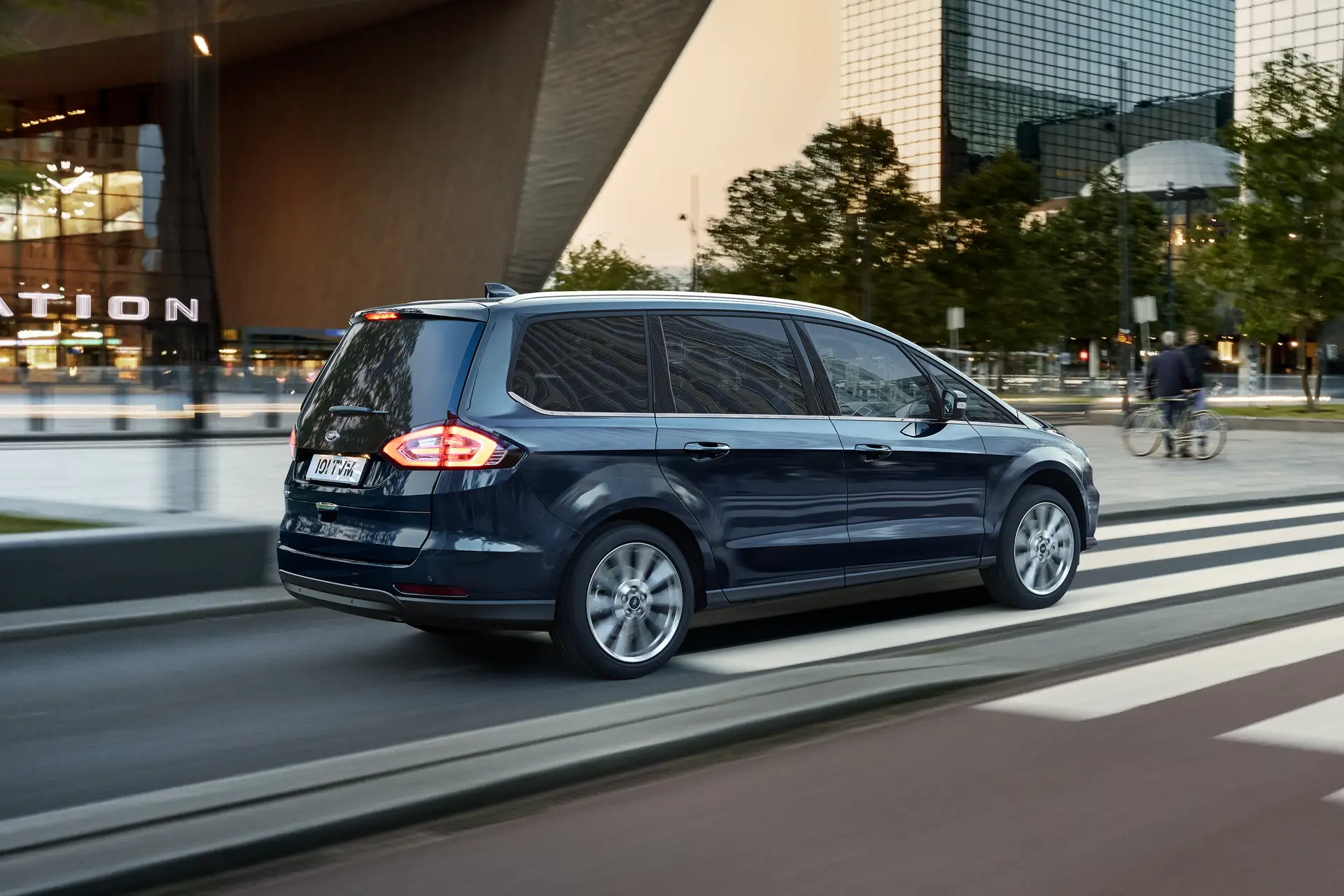
In recent times Ford has offered two large seven-seat, car-based MPVs in its lineup: the Galaxy and the S-Max. Both are based on the Mondeo underneath, but the lower, lighter S-Max is designed to offer more driver appeal, whereas the Galaxy has been configured for comfort and space.
The ride quality is excellent, with the Galaxy dealing with all but the worst road imperfections with aplomb. The trade-off is it can feel a little unwieldy and top-heavy when cornering, but it’s far better than you might think and certainly less cumbersome than van-based MPVs.
It’s not quite as agile as the S-Max, but it pushes its more desirable sibling very close, while the steering is fairly sharp and direct. It’s just a shame it feels a little inconsistent, with a weighty initial feel giving way to something that’s overly light and remote.
Overall, we’d say the Ford Galaxy feels like a smaller car to drive than it is. It’s easy to place on the road, thanks to its expanse of glass, while it doesn’t suffer from the excessive body roll you might have experienced in MPVs of old.
All-wheel-drive was available as an option on the 190PS version, but while the all-weather traction is useful, the Galaxy will cost more to buy and to run. Make sure you really need it before signing a finance contract.
Self-levelling suspension was available on front-wheel-drive models. It’s a useful upgrade, especially if you intend to use your car for towing.
What engines and gearboxes are available in the Ford Galaxy?
The Ford Galaxy was primarily powered by a 2.0-litre diesel engine which was available with a choice of outputs. However, in late 2021 the diesel engines were removed and only a petrol-electric hybrid is now offered. This decision reflects the fact that, nowadays, the majority of customers are private hire drivers after a bigger alternative to the Toyota Prius.
The 150PS version of the diesel engine is perfect for most family buyers, offering a 0-62mph time of 10.9 seconds and a top speed of 123mph. The 0-62mph time remains the same if you opt for the excellent eight-speed automatic transmission, but the top speed drops to 122mph. The 0-62mph time is 9.6 seconds for the 190PS engine in front-wheel-drive guise, or 10.6 seconds if you opt for all-wheel drive.
It’s worth noting that the six-speed manual gearbox wasn't available on the 190PS version. It’s a good transmission, but the eight-speed automatic seems to suit the relaxed, smooth and comfortable nature of the Galaxy.
The Ford Galaxy was launched in 2015 with a good choice of engines. Pick of the bunch is the 150PS version of the older 2.0-litre Duratorq TDCi diesel, although the 1.5-litre EcoBoost petrol is great if you spend most of your time in the city. Ford introduced the 2.0-litre EcoBoost diesel engine and new eight-speed automatic transmission in 2018. Both are superior to the units they replaced.
There was also a slightly bonkers 240PS 2.0-litre EcoBoost petrol engine. A 0-62mph time of 8.6 seconds and top speed of 140mph are genuinely impressive for a car like the Galaxy. Alternatively, a twin-turbocharged 210PS diesel offered similar performance with the benefit of improved efficiency.
Nowadays, if you want a new Ford Galaxy your only choice is an 'FHEV' hybrid version. It's not a plug-in hybrid; instead the 2.5-litre petrol engine is boosted by a small electric motor, with a small battery that charges up under coasting and braking. It's a bit of an old-school system; it's smooth enough around town, but not all that pleasant once up to speed, and you'll find the engine is rarely off if you're moving.
Refinement and noise levels
The Ford Galaxy feels remarkably refined for a humble MPV, with very little wind and road noise entering the cabin. Although the size of the interior gives the Galaxy cathedral-like characteristics, you feel nicely isolated from the outside world.
It’s quiet in the city and hushed on the motorway, regardless of the transmission. Having said that, the eight-speed automatic delivers the best refinement, with seamless shifts through the gears and a generally smooth and relaxed nature. It wouldn’t feel out of place in a vehicle wearing a premium badge.
The 2.0-litre EcoBlue diesel engine is just as impressive, feeling more refined and less clattery than diesel engines of old. Likewise, the hybrid is pretty refined most of the time, but if you ask for full throttle things get noisy and strained.
We can’t praise the Ford Galaxy enough overall, though. Little wonder it’s the choice of countless airport taxi firms and chauffeur businesses. You have to question why so many people are turning their backs on MPVs in favour of SUVs. On the evidence here, it’s a strange decision.
Safety equipment: How safe is the Ford Galaxy?
The Ford Galaxy was awarded a maximum five-star Euro NCAP safety rating in 2015. The individual scores were 87 percent for adult occupant protection, 87 percent for child occupant protection, 79 percent for pedestrian safety, and 71 percent for safety assist systems.
Today, the Galaxy is fitted with multiple airbags, Curve Control to counter understeer running wide when cornering), electronic stability control with trailer-sway control and hill-start assist, active rollover protection and three Isofix points.
All models also come with cruise control, pre-collision assist with pedestrian and cyclist detection, front and rear parking sensors, and traffic sign recognition. The Titanium model also gets a lane-keeping system, which includes lane-keeping assist, lane-keeping alert, automatic high beam, driver alert and automatic windscreen wipers.
Options include adaptive cruise control, blind-spot information, park assist, a front video camera with split view, and a rear-view camera.
MPG and fuel costs: What does a Ford Galaxy cost to run?
"The Ford Galaxy is reasonably fuel efficient given its size and weight, particularly if you opt for a diesel or petrol hybrid. the 2.0-litre EcoBoost petrol is pretty thirsty, however, so it's best avoiding unless you're dead against buying a diesel car."
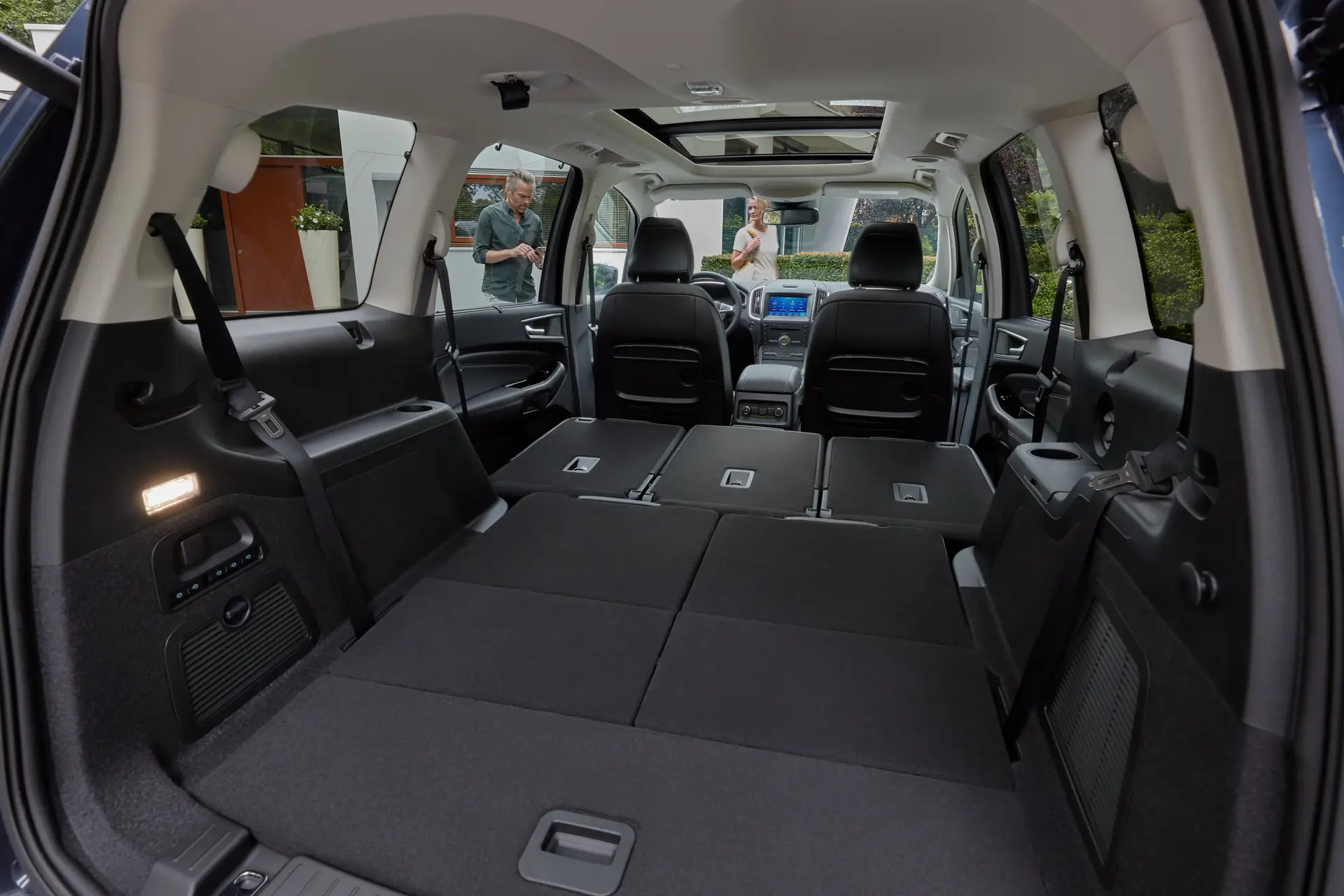
The 2.0-litre EcoBlue can deliver between 45.6mpg and 46.3mpg when fitted with a six-speed manual gearbox. This drops to 43.5mpg if you opt for the eight-speed automatic transmission.
You’ll see the same 43.5mpg from the 190PS version, but all-wheel drive will put a small dent in the fuel economy, which drops to 40.4mpg. These are the latest, and more realistic, WLTP test figures.
At launch, the economy figures for the Galaxy were sourced using the less reliable NEDC test. As a result, the claimed figures of 35.8mpg for the 2.0-litre EcoBoost petrol, rising to 56.5mpg for the 150PS 2.0-litre Duratorq diesel, should be taken with a pinch of salt.
The hybrid, meanwhile, officially manages 43.5mpg, a figure which is no better than the equivalent diesel. However, as buyer trends move away from diesel and some cities look to penalise drivers of older diesels, it's a decent alternative.
How reliable is the Ford Galaxy?
Ford executives will be disappointed to see that it is in the bottom five car brands in the latest HonestJohn.co.uk Satisfaction Index. However, modern cars are generally pretty reliable, and the fact that Ford sells so many cars means it's more likely that problems are reported.
The Galaxy, meanwhile, has been around for seven years now, and reported early issues such as cracking oil sumps and malfunctioning adaptive headlights should have been resolved by now. The mechanicals are used widely across Ford's larger car range, and the EcoBlue diesel engine is also found in found in the Transit workhorse.
Insurance groups and costs
Because the Ford Galaxy 2.0 TDCi Zetec slots into insurance group 17, it’s likely to be the cheapest version to insure. At the opposite end of the scale, the 240PS version of the 2.0 EcoBlue Titanium X will be the costliest Galaxy, thanks to an insurance group rating of 31.
The insurance groups of other models range from 19 to 28, so insuring a Galaxy is unlikely to break the bank.
For some context, the groups for the Seat Alhambra range from 13 to 25, while the groups are 15 to 25 for the Volkswagen Sharan.
VED car tax: What is the annual road tax on a Ford Galaxy?
Buy a Ford Galaxy on or after 1 April 2020 and you’ll pay £540 in ‘showroom tax’ on all versions except the all-wheel-drive model. Because this Galaxy emits 156g/km of CO2, it sits in a higher tax band, meaning a ‘showroom tax’ of £870. In both cases, the cost is included in the vehicle purchase price.
From year two, the Vehicle Excise Duty (VED, or road tax) drops to £150, which is the same price as Ford Galaxy models registered after 1 April 2017.
The rate of VED is different for Ford Galaxy models registered on or before 31 March 2017. CO2 emissions range from 129g/km to 149g/km, so you’ll pay between £125 and £165 a year, depending on the engine.
How much should you be paying for a used Ford Galaxy?
"Used Ford Galaxys start from around £10,000 for the latest generation car, but be wary of super cheap cars with high miles as they'll have likely been used as taxis or private hire vehicles."
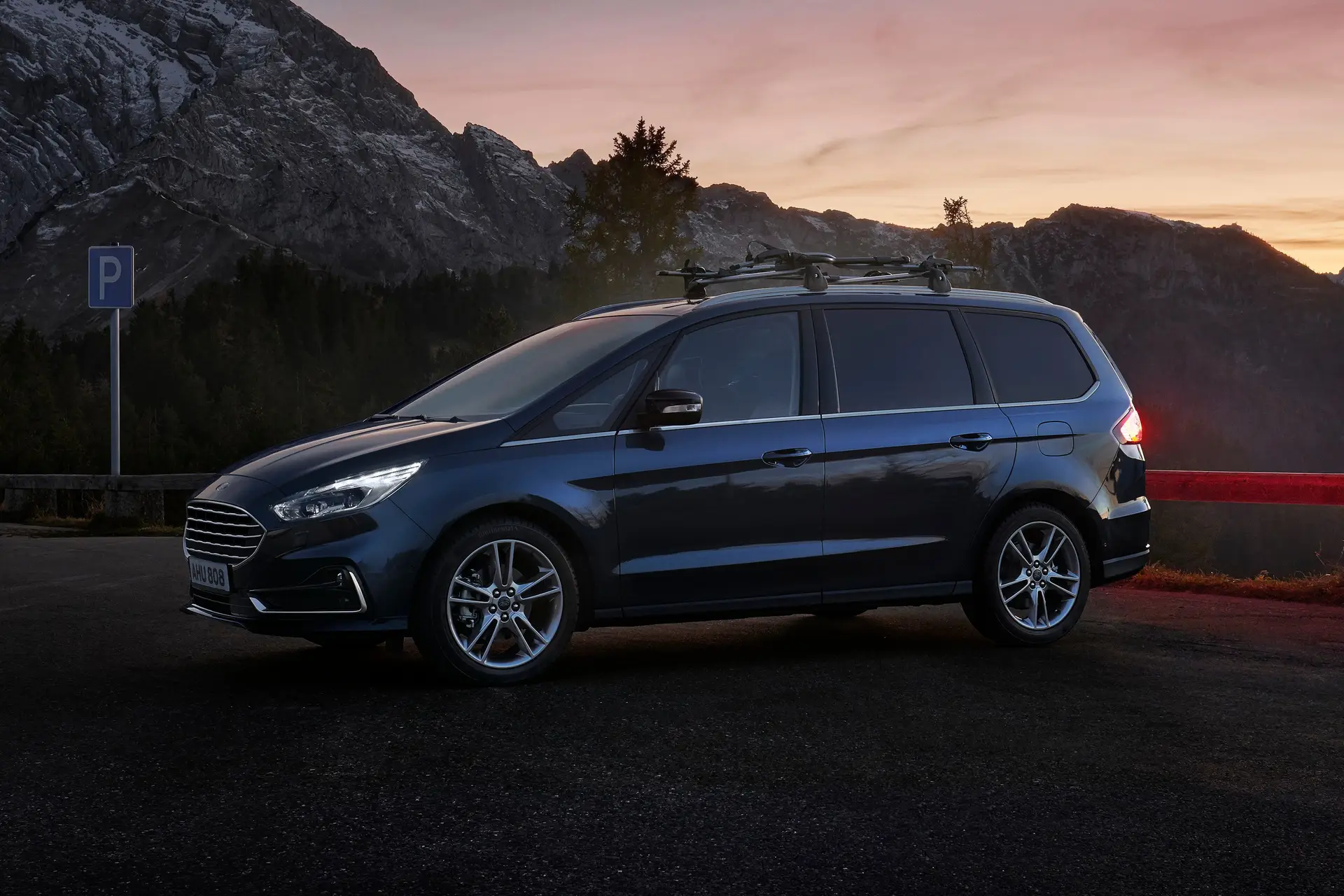
You’ll pay at least £10,000 for a 2015 Ford Galaxy, but make sure you don’t end up with the visually similar, but less desirable, previous-generation car. The Mk3 Ford Galaxy was a big step forward from the Mk2, but some cars could have been registered after the launch of the current car.
A Ford Galaxy with the excellent 2.0-litre EcoBlue diesel engine will cost upwards of £18,000. That car was introduced in 2018. The post-facelift Galaxy costs even more, with prices starting from around £22,000. In all cases, beware of cars showing signs of use as a taxi cab or airport transport. These tend to have more miles on the clock, increased wear on the inside, along with more stone chips on the bonnet and front bumper.
Very few examples of the very latest, hybrid-only Galaxy have emerged on the used market yet.
Trim levels and standard equipment
As of mid-2021, Ford culled most of the trim levels and engine options in the Galaxy lineup. The only trim level now available when new is Titanium trim, although there is still plenty of used examples of the previous spec options, which we've detailed here.
The entry-level Zetec trim boasts 17-inch alloy wheels, automatic wipers, black roof rails, an eight-inch colour touchscreen media system, front and rear parking sensors, a start button, cruise control, pre-collision assist, dual-zone climate control, traffic sign recognition, sport seats and three Isofix points.
Upgrading to Titanium adds different 17-inch alloy wheels, LED daytime running lights, a chrome finish on the upper door line, silver roof rails, rear privacy glass, automatic headlights, satellite navigation, lane-keeping system, interior ambient lighting, electric third-row seats, keyless entry and go, a 10.1-inch digital dashboard and rain-sensing wipers.
There are three option packs: Driver Assistance, Titanium Lux and Winter. The Driver Assistance pack is available on both trim levels, but you’ll need to buy the Titanium to get the other two.
If you’re buying used, the discontinued Titanium X trim is worth a look, as it packs some desirable options and accessories as standard. Highlights include leather seats, a panoramic sunroof, electric tailgate, heated seats and a rear-view camera.
Ask the heycar experts: common questions
Is the Ford Galaxy a reliable car?
Does Ford still make the Galaxy?
Is the Ford Galaxy a good car?
Ford Galaxy cars for sale on heycar
- 2.0 EcoBlue Titanium 5dr Auto
Ford Galaxy
20209,532 milesDiesel£25,995£498 mofair priceDelivery - 2.0 EcoBlue 150 Titanium 5dr
Ford Galaxy
20219,813 milesDiesel£25,499£518 mogood priceTN377SQ - 2.0 EcoBlue 150 Titanium 5dr Auto
Ford Galaxy
202022,495 milesDiesel£23,999£473 mogood priceTN377SQ - 2.0 TDCi 180 Titanium 5dr Powershift
Ford Galaxy
201630,411 milesDiesel£14,999£430 mogood priceDE554GR - 2.0 TDCi 150 Titanium X 5dr
Ford Galaxy
201722,005 milesDiesel£553 moor £19,499was
£19,999
£500 offfair priceTN377SQ
Other popular reviews
Stay up to speed with great offers plus the latest car news and reviews
Keep me updated by email with the latest advice, news and offers from heycar.
By submitting you agree to our privacy policy

